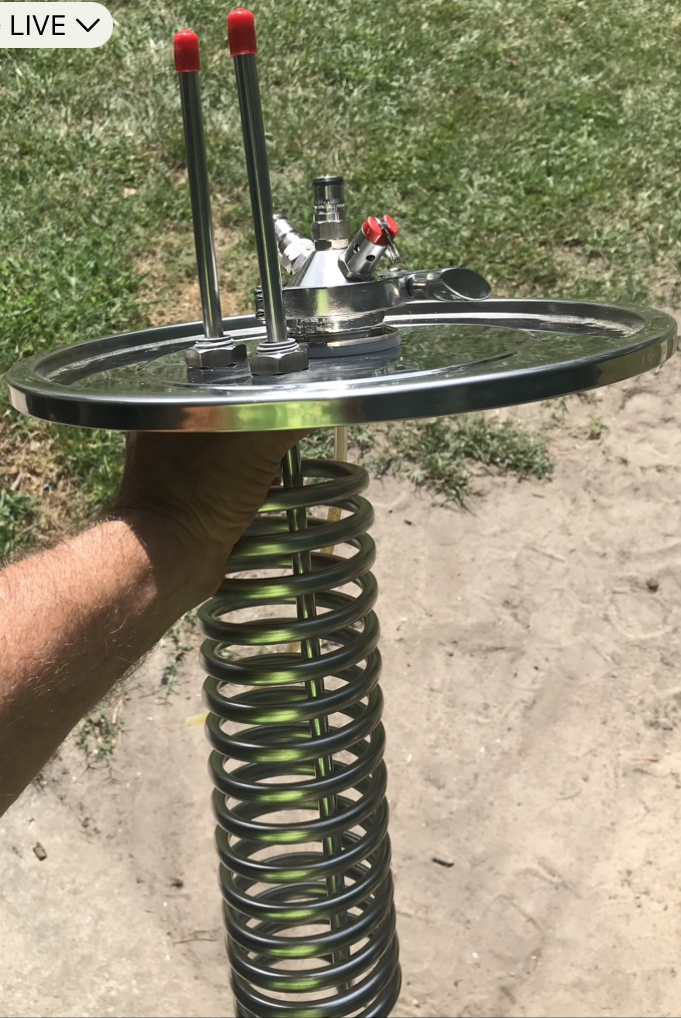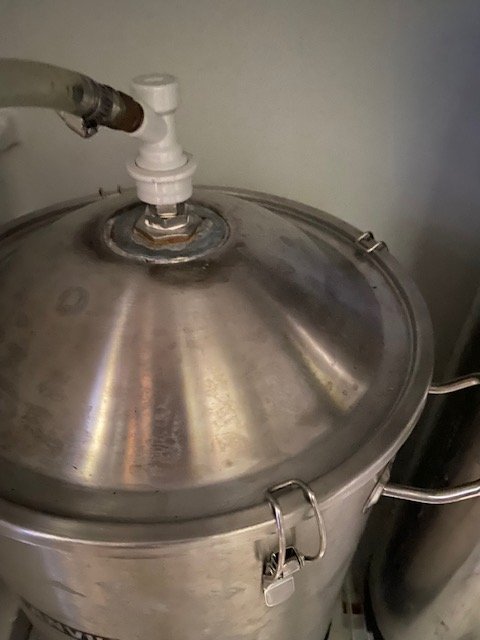I use a 1.6 gallon Torpedo keg for line purging, clearing out a party tap, even Tapit. I keep it filled with Starsan and pressurized with CO₂
For purging transfer lines, I put the gas-gas and the liquid-liquid lines on the keg with it upright. First, I depress the pin inside the liquid connector on the L-L line. This fills it with Starsan. Next I invert the keg. With keg upside down, the liquid pickup is above the liquid level. By depressing the pin again on liquid connector, the Starsan is blown out by the CO₂ in the keg. Also, while upside down, the gas inlet is under the liquid level, so I depress the gas pin and the G-G line is filled with Starsan. I turn the keg right side up, depress the gas pin again and the Starsan is blown out and replaced with CO₂. Disconnect both lines and they have been rinsed with starsan and purged with CO₂. It only takes seconds to do this.
I usually do a gravity, closed transfer into a fermentation purged keg after this, only using a short burst of CO₂ to start the flow.















![Craft A Brew - Safale S-04 Dry Yeast - Fermentis - English Ale Dry Yeast - For English and American Ales and Hard Apple Ciders - Ingredients for Home Brewing - Beer Making Supplies - [1 Pack]](https://m.media-amazon.com/images/I/41fVGNh6JfL._SL500_.jpg)












































